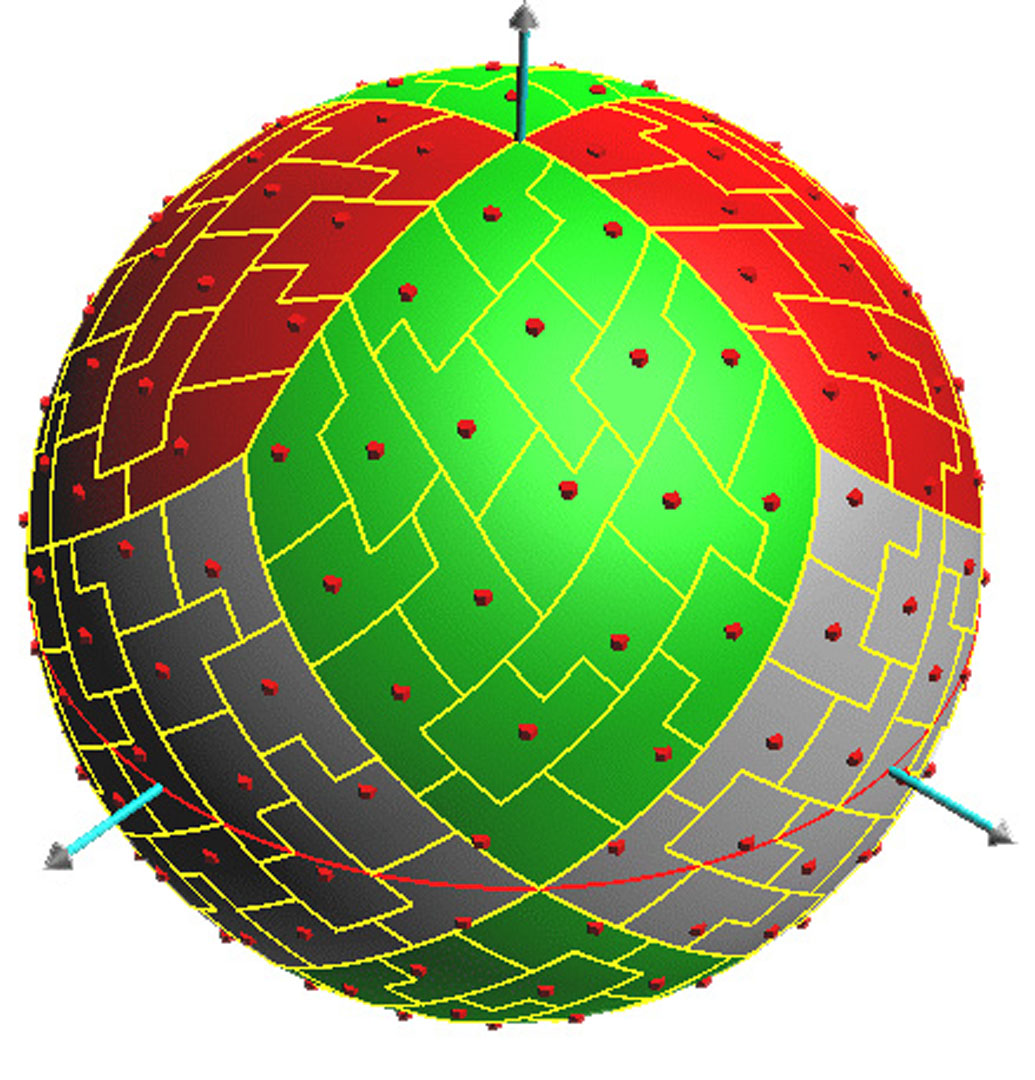“Sampling with polyominoes” by Ostromoukhov
Conference:
Type(s):
Title:
- Sampling with polyominoes
Presenter(s)/Author(s):
Abstract:
We present a new general-purpose method for fast hierarchical importance sampling with blue-noise properties. Our approach is based on self-similar tiling of the plane or the surface of a sphere with rectifiable polyominoes. Sampling points are associated with polyominoes, one point per polyomino. Each polyomino is recursively subdivided until the desired local density of samples is reached. A numerical code generated during the subdivision process is used for thresholding to accept or reject the sample. The exact position of the sampling point within the polyomino is determined according to a structural index, which indicates the polyomino’s local neighborhood. The variety of structural indices and associated sampling point positions are computed during the offline optimization process, and tabulated. Consequently, the sampling itself is extremely fast. The method allows both deterministic and pseudo-non-deterministic sampling. It can be successfully applied in a large variety of graphical applications, where fast sampling with good spectral and visual properties is required. The prime application is rendering.
References:
1. Clarke, A. L., 2006. The Poly Pages. http://www.recmath.com/PolyPages.Google Scholar
2. Dunbar, D., and Humphreys, G. 2006. A Spatial Data Structure for Fast Poisson-disk Sample Generation. ACM Transactions on Graphics, 25, 3, 503–508. Google ScholarDigital Library
3. Golomb, S. W. 1996. Polyominoes: Puzzles, Patterns, Problems, and Packings. Princeton University Press.Google Scholar
4. Gorski, K. M., Hivon, E., Banday, A. J., Wandelt, B. D., Hansen, F. K., Reinecke, M., and Bartelmann, M. 2005. HEALPix – A Framework for High Resolution Discretization, and Fast Analysis of Data Distributed on the Sphere. The Astrophysical Journal, 622, 759–771.Google ScholarCross Ref
5. Grünbaum, B., and Shephard, G. 1986. Tilings and Patterns. W. H. Freeman. Google ScholarDigital Library
6. Kopf, J., Cohen-Or, D., Deussen, O., and Lischinski, D. 2006. Recursive wang tiles for real-time blue noise. ACM Transactions on Graphics 25, 3, 509–518. Google ScholarDigital Library
7. Lagae, A., and Dutré, P. 2006. An Alternative for Wang Tiles: Colored Edges versus Colored Corners. ACM Transactions on Graphics, 25, 4, 1442–1459. Google ScholarDigital Library
8. Ostromoukhov, V., Donohue, C., and Jodoin, P.-M. 2004. Fast Hierarchical Importance Sampling with Blue Noise Properties. ACM Transactions on Graphics, 23, 3, 488–495. Google ScholarDigital Library
9. Pharr, M., and Humphreys, G. 2004. Physically Based Rendering: Form Theory to Implementation. Morgan Kaufmann. Google ScholarDigital Library
10. Rousselle, F., Leblanc, L., Clarberg, P., Ostromoukhov, V., and Poulin, P. 2007. Hierarchical Threasholding for Efficient Sampling of the Product of All-Frequency Functions. Submitted work.Google Scholar
11. Ulichney, R. A. 1993. The Void-and-cluster Method for Dither Array Generation. In Proceedings SPIE, Human Vision, Visual Processing, Digital Displays IV, B. E. Rogowitz and J. P. Allebach, Eds., vol. 1913, 332–343.Google ScholarCross Ref




